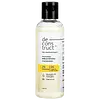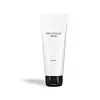What's inside
What's inside
 Key Ingredients
Key Ingredients

 Benefits
Benefits

 Concerns
Concerns

 Ingredients Side-by-side
Ingredients Side-by-side

Water
Skin ConditioningCocamidopropyl Betaine
CleansingSodium Methyl Cocoyl Taurate
CleansingGlycerin
HumectantXylitylglucoside
HumectantAnhydroxylitol
HumectantXylitol
HumectantSodium Methyl 2-Sulfolaurate
CleansingDisodium 2-Sulfolaurate
CleansingCyamopsis Tetragonoloba Gum
Emulsion StabilisingNiacinamide
SmoothingGlycyrrhiza Glabra Root Extract
BleachingAcrylates/C10-30 Alkyl Acrylate Crosspolymer
Emulsion StabilisingEthylhexylglycerin
Skin ConditioningPhenoxyethanol
PreservativeTriethanolamine
BufferingSodium Gluconate
Skin ConditioningWater, Cocamidopropyl Betaine, Sodium Methyl Cocoyl Taurate, Glycerin, Xylitylglucoside, Anhydroxylitol, Xylitol, Sodium Methyl 2-Sulfolaurate, Disodium 2-Sulfolaurate, Cyamopsis Tetragonoloba Gum, Niacinamide, Glycyrrhiza Glabra Root Extract, Acrylates/C10-30 Alkyl Acrylate Crosspolymer, Ethylhexylglycerin, Phenoxyethanol, Triethanolamine, Sodium Gluconate
Water
Skin ConditioningGlycerin
HumectantSorbitol
HumectantDisodium Cocoyl Glutamate
CleansingSodium Cocoyl Glutamate
CleansingSodium Cocoyl Glycinate
CleansingCaprylic/Capric Triglyceride
MaskingTricaprylin
MaskingGlyceryl Stearate Citrate
EmollientBetula Alba Juice
AstringentPropanediol
SolventLactic Acid
BufferingPanthenol
Skin ConditioningSodium Levulinate
Skin ConditioningPotassium Sorbate
PreservativeAllantoin
Skin Conditioning1,2-Hexanediol
Skin ConditioningSodium Hyaluronate
HumectantPotassium Hyaluronate
Skin ConditioningSodium Hyaluronate Crosspolymer
HumectantSodium Acetylated Hyaluronate
HumectantHydroxypropyltrimonium Hyaluronate
Hydrolyzed Hyaluronic Acid
HumectantHyaluronic Acid
HumectantHydrolyzed Sodium Hyaluronate
Skin ConditioningSodium Retinoyl Hyaluronate
Zinc Hydrolyzed Hyaluronate
HumectantAscorbylpropyl Hydrolyzed Hyaluronate
HumectantAscorbyl Propyl Hyaluronate
Skin ConditioningDimethylsilanol Hyaluronate
HumectantPentylene Glycol
Skin ConditioningButylene Glycol
HumectantSodium Benzoate
MaskingVaccinium Macrocarpon Fruit
Skin ConditioningXanthan Gum
EmulsifyingSodium Gluconate
Skin ConditioningWater, Glycerin, Sorbitol, Disodium Cocoyl Glutamate, Sodium Cocoyl Glutamate, Sodium Cocoyl Glycinate, Caprylic/Capric Triglyceride, Tricaprylin, Glyceryl Stearate Citrate, Betula Alba Juice, Propanediol, Lactic Acid, Panthenol, Sodium Levulinate, Potassium Sorbate, Allantoin, 1,2-Hexanediol, Sodium Hyaluronate, Potassium Hyaluronate, Sodium Hyaluronate Crosspolymer, Sodium Acetylated Hyaluronate, Hydroxypropyltrimonium Hyaluronate, Hydrolyzed Hyaluronic Acid, Hyaluronic Acid, Hydrolyzed Sodium Hyaluronate, Sodium Retinoyl Hyaluronate, Zinc Hydrolyzed Hyaluronate, Ascorbylpropyl Hydrolyzed Hyaluronate, Ascorbyl Propyl Hyaluronate, Dimethylsilanol Hyaluronate, Pentylene Glycol, Butylene Glycol, Sodium Benzoate, Vaccinium Macrocarpon Fruit, Xanthan Gum, Sodium Gluconate
Ingredients Explained
These ingredients are found in both products.
Ingredients higher up in an ingredient list are typically present in a larger amount.
Glycerin is already naturally found in your skin. It helps moisturize and protect your skin.
A study from 2016 found glycerin to be more effective as a humectant than AHAs and hyaluronic acid.
As a humectant, it helps the skin stay hydrated by pulling moisture to your skin. The low molecular weight of glycerin allows it to pull moisture into the deeper layers of your skin.
Hydrated skin improves your skin barrier; Your skin barrier helps protect against irritants and bacteria.
Glycerin has also been found to have antimicrobial and antiviral properties. Due to these properties, glycerin is often used in wound and burn treatments.
In cosmetics, glycerin is usually derived from plants such as soybean or palm. However, it can also be sourced from animals, such as tallow or animal fat.
This ingredient is organic, colorless, odorless, and non-toxic.
Glycerin is the name for this ingredient in American English. British English uses Glycerol/Glycerine.
Learn more about GlycerinThis is the synthetic salt of gluconic acid, a form of PHA and mild exfoliant.
It is mainly used to stabilize oil and butter formulations from going bad. Sodium gluconate is a humectant, pH regulator, and chelating agent.
Chelating agents help neutralize unwanted metals from affecting the formulation.
Sodium gluconate is water-soluble.
Learn more about Sodium GluconateWater. It's the most common cosmetic ingredient of all. You'll usually see it at the top of ingredient lists, meaning that it makes up the largest part of the product.
So why is it so popular? Water most often acts as a solvent - this means that it helps dissolve other ingredients into the formulation.
You'll also recognize water as that liquid we all need to stay alive. If you see this, drink a glass of water. Stay hydrated!
Learn more about Water